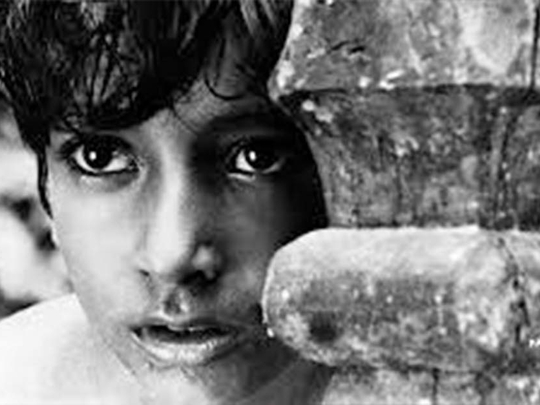
When I recently saw the newly restored versions of Satyajit Ray’s Apu Trilogy, a wave of emotion swept up over me as I watched Apu grow up, become a writer and lose his family.
Though I had seen them all before, I had never quite appreciated that these movies, the first of which was released in 1955, about the life of a poor family in 1920s British India could feel so universal. Perhaps I am just getting older, but the movies now convey something deeply true that was lost on me when I watched them in my twenties — the tension the characters feel between their sense of duty to tradition and family and their pursuit of personal goals.
In the third movie, “Apur Sansar” or “The World of Apu,” the main character visits a village to attend the wedding of his friend’s cousin, who is the bride. When the groom’s bridal party shows up, the family realises the groom is mentally unstable. But the bride, Aparna, has to be married because the auspicious hour for her wedding is now and if she misses the window, tradition dictates that she will stay single for the rest of her life. So, the family beseeches Apu to become the groom.
Apu is young, full of optimism and has other ideas for his life. He wants to write and is working on his semi-autobiographical first novel. The family’s request confuses him at first, but when the family presses him, he gets angry and admonishes them. “Are you living in the Dark Ages? This is all a waste of time,” he tells them.
But after dismissing them, he continues to agonise over the decision. We know from an earlier scene that Apu has never been in love, but is writing about it in his book. He walks back to the family and sheepishly agrees to get married. Later, he falls so madly in love with Aparna that he stops working on his book for a time.
The specific details of Apu’s dilemma and the choice he makes are, of course, unique to a particular time and place. But they represent the kinds of choices people confront all the time. Many young people today, myself included, struggle to strike the right balance between getting married and starting a family and pursuing our personal goals, whether it be writing a book or achieving some other professional success.
The Apu movies “are just timeless”, Indian filmmaker Dev Benegal, who worked on a documentary about Ray that came out in 1982 said recently. “We are able to connect to them in a very fundamental way.”
Ray’s trilogy, which is based on two books by Bibhutibhushan Bandyopadhyay, is a kind of a modernist epic, in the same way as are the works of Dostoyevsky, Benegal said. Such epics are not trying to tell a history of a country or a people like India’s “Mahabharata” or Tolstoy’s “War and Peace”. The Apu story largely ignores current affairs or politics, even though it is set at a time when India was going through a tumultuous independence movement. This is an epic with a small e.
Ray, who received a lifetime achievement Oscar soon before he died in 1992, never enjoyed great commercial success. But he remains incredibly relevant. Martin Scorsese has said Ray’s influence on him was “incalculable”. In a speech at the Smithsonian in 2002, Scorsese said that watching the first movie of the trilogy, “Pather Panchali”, which is set in a small Bengali village, helped him interpret the Lower East Side, where he grew up and which he described as a little Italian village.
Now I see bits of the Apu trilogy in lots of places. The scenes in which the main character in Richard Linklater’s movie “Boyhood”, Mason, bikes around his Texas neighbourhood are so reminiscent of the wild abandon with which Apu runs around the streets of Benares, also known as Varanasi, in the second film of the series, “Aparajito”.
The trilogy is playing in several American cities this summer. The artistry of these stories, set in a distant world and time, are as powerful as ever.
–New York Times News Service












